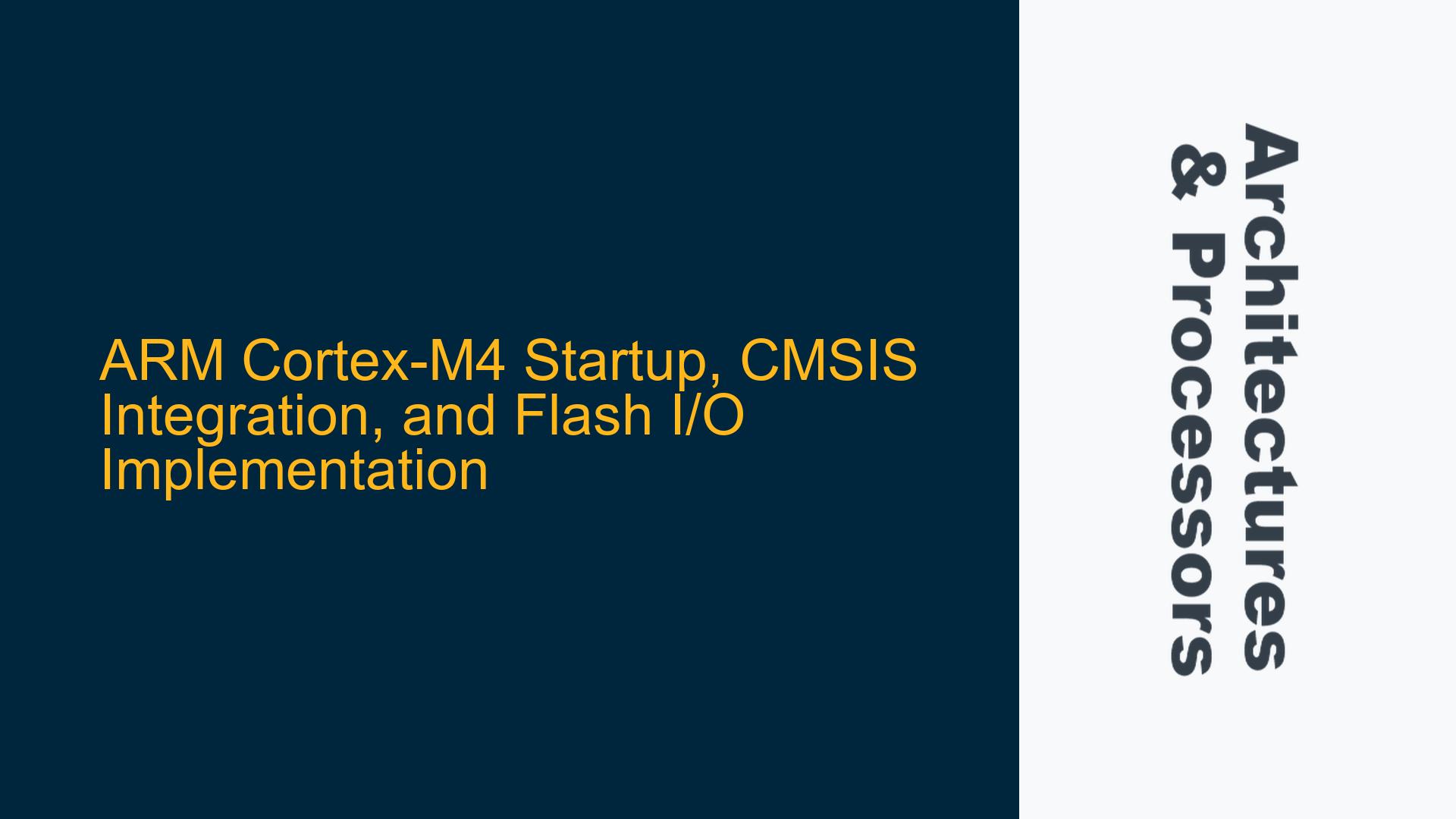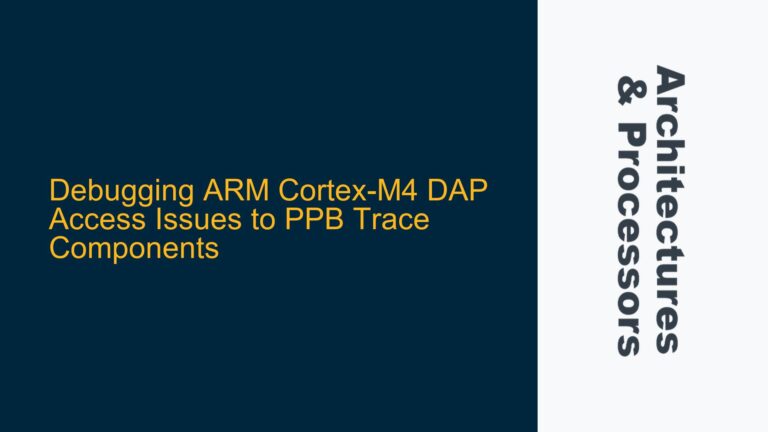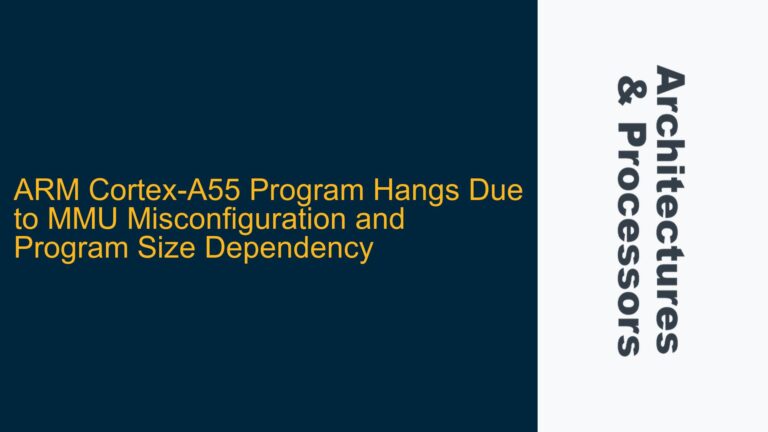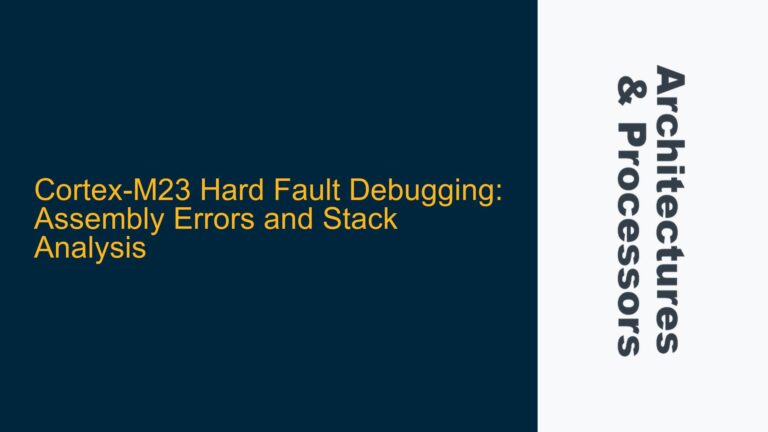ARM Cortex-M4 Startup File and CMSIS Integration in STM32F4xx Projects
The ARM Cortex-M4 architecture, particularly in STM32F4xx microcontrollers, relies on a well-defined startup sequence and proper integration of the Cortex Microcontroller Software Interface Standard (CMSIS) to ensure a functional embedded system. The startup file, typically named startup_stm32f4xx.s, is written in assembly and is responsible for initializing the microcontroller’s stack pointer, vector table, and essential system configurations before handing control over to the main application. The CMSIS layer, consisting of files like system_stm32f4xx.c, stm32f4xx.h, and system_stm32f4xx.h, provides a standardized hardware abstraction layer for ARM Cortex-M processors, enabling consistent access to peripherals and system features.
The startup_stm32f4xx.s file defines the interrupt vector table, which maps exception handlers and interrupt service routines (ISRs) to specific memory addresses. This file also includes the reset handler, which is the first function executed after a system reset. The reset handler initializes the microcontroller’s core registers, configures the clock tree, and calls the SystemInit() function defined in system_stm32f4xx.c. The SystemInit() function configures the system clock, flash latency, and other critical peripherals.
The stm32f4xx.h file is a comprehensive header that includes definitions for all peripherals and registers specific to the STM32F4xx family. It relies on the CMSIS core header files to provide standardized access to Cortex-M4 features such as the Nested Vectored Interrupt Controller (NVIC) and System Control Block (SCB). The system_stm32f4xx.h file complements this by defining system-specific configurations and macros.
To integrate these components into a project, the linker script must align the memory sections defined in the startup file with the physical memory layout of the STM32F4xx microcontroller. This ensures that the vector table, code, and data are placed in the correct memory regions. The application code, such as hello.c, interacts with the CMSIS layer to access peripherals and system features.
Challenges in Implementing Flash I/O with scanf and printf
Implementing a device that uses scanf and printf for reading and writing data to internal flash memory presents several challenges. The STM32F4xx internal flash memory is non-volatile and requires specific procedures for erasing and programming. The flash memory is organized into sectors, and each sector must be erased before new data can be written. Flash operations are performed through the Flash Memory Interface (FLASH) peripheral, which provides registers for controlling erase and programming operations.
The printf and scanf functions are part of the standard C library and are typically used for formatted input and output. However, these functions rely on a backend for actual data transmission and reception. In embedded systems, this backend is often implemented using a serial communication peripheral such as UART. Redirecting printf and scanf to use internal flash memory instead of a communication peripheral requires custom implementations of the underlying functions.
One of the primary challenges is ensuring that flash operations do not interfere with the execution of the application code. Flash erase and programming operations can take several milliseconds, during which the CPU is occupied with the operation. This can lead to missed interrupts or delayed responses to real-time events. Additionally, flash memory has a limited number of write cycles, and frequent writes can lead to premature wear-out.
Another challenge is managing the flash memory layout to avoid conflicts between the application code, data, and the flash I/O operations. The linker script must be carefully configured to reserve specific flash sectors for data storage while ensuring that the application code and vector table are not overwritten.
Customizing the Project for Flash I/O with scanf and printf
To implement a device that uses scanf and printf for reading and writing data to internal flash memory, several modifications to the project are required. The first step is to create custom implementations of the _write and _read functions, which are used by printf and scanf respectively. These functions must be tailored to interact with the STM32F4xx flash memory instead of a communication peripheral.
The _write function should handle the process of erasing the appropriate flash sector, writing the data, and verifying the write operation. The _read function should read data from the specified flash address and return it to the caller. Both functions must ensure that flash operations are performed safely, without disrupting the application’s execution.
The linker script must be updated to reserve specific flash sectors for data storage. This involves defining a new memory region in the linker script and assigning it to a section in the application code. The application code must then use pointers to access the reserved flash memory region.
The system_stm32f4xx.c file may require modifications to configure the flash latency and enable the flash memory interface. The SystemInit() function should be reviewed to ensure that the flash memory is properly initialized and that the system clock is configured to support flash operations.
Finally, the application code in hello.c must be updated to use the custom printf and scanf implementations. This involves replacing standard I/O function calls with calls to the custom functions and ensuring that the data is correctly formatted and stored in the reserved flash memory region.
By carefully modifying the project files and ensuring that flash operations are performed safely, it is possible to implement a device that uses scanf and printf for reading and writing data to internal flash memory on an STM32F4xx microcontroller. This approach leverages the existing CMSIS layer and startup sequence while adding custom functionality to meet the specific requirements of the application.






